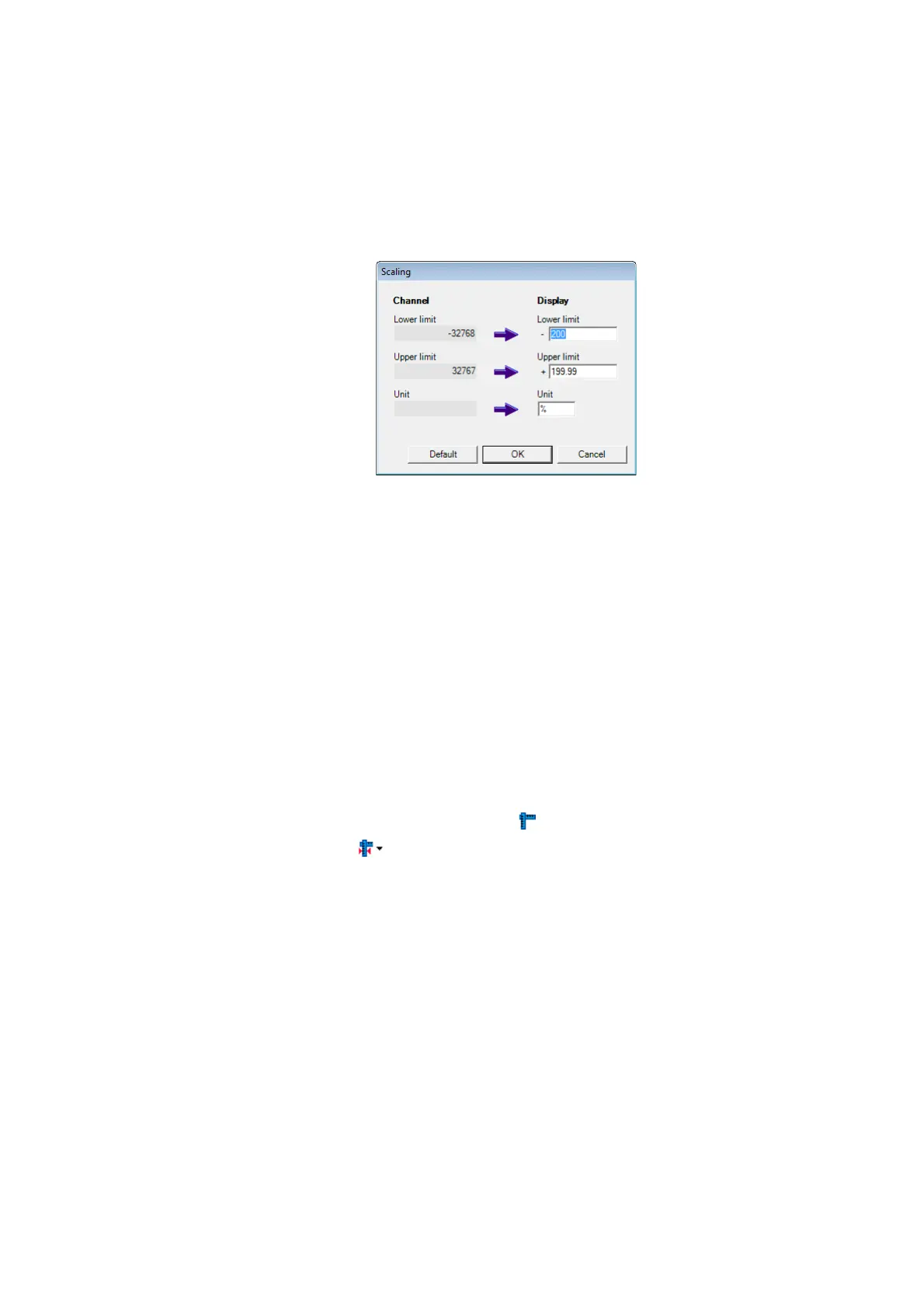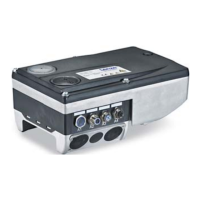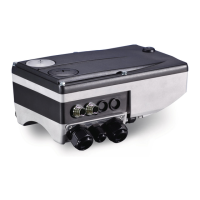Lenze · 8400 HighLine · Reference manual · DMS 12.0 EN · 06/2017 · TD23 693
10 Oscilloscope function
10.2 Operation
_ _ _ _ _ _ _ _ _ _ _ _ _ _ _ _ _ _ _ _ _ _ _ _ _ _ _ _ _ _ _ _ _ _ _ _ _ _ _ _ _ _ _ _ _ _ _ _ _ _ _ _ _ _ _ _ _ _ _ _ _ _ _ _
How to carry out the scaling manually for each channel:
1. Go to the channel list and click the entry to be changed in the "unit" column (double-
clicking an empty line has no effect.)
• The dialog for entering the scaling opens which permits the entry of the lower and upper
limit and the entry of the unit as shown in the example:
2. Enter the lower limit, the upper limit and the unit.
• On the right, you can enter any scaling values as upper and lower limits.
• On the left side of the dialog, the limits of the data type of the recorded value are
displayed.
3. Click the OK button.
• The dialog box is closed.
10.2.8 Cursor function: Reading individual measured values
In addition to the zoom and scaling function, the oscilloscope offers a "cursor function" that can be
used to display individual measured values of a selectable channel or the difference between two
measured values.
How to use the cursor function:
1. Go to the oscilloscope toolbar and click the icon to activate the cursor function.
• Another button is displayed which enables a centering of two vertical measuring
lines that are independent of each other and can be moved.
• The status bar displays the position of both measuring lines and the difference between
them.
2. Select the channel for which individual measured values are to be indicated from the
Channel list field.
